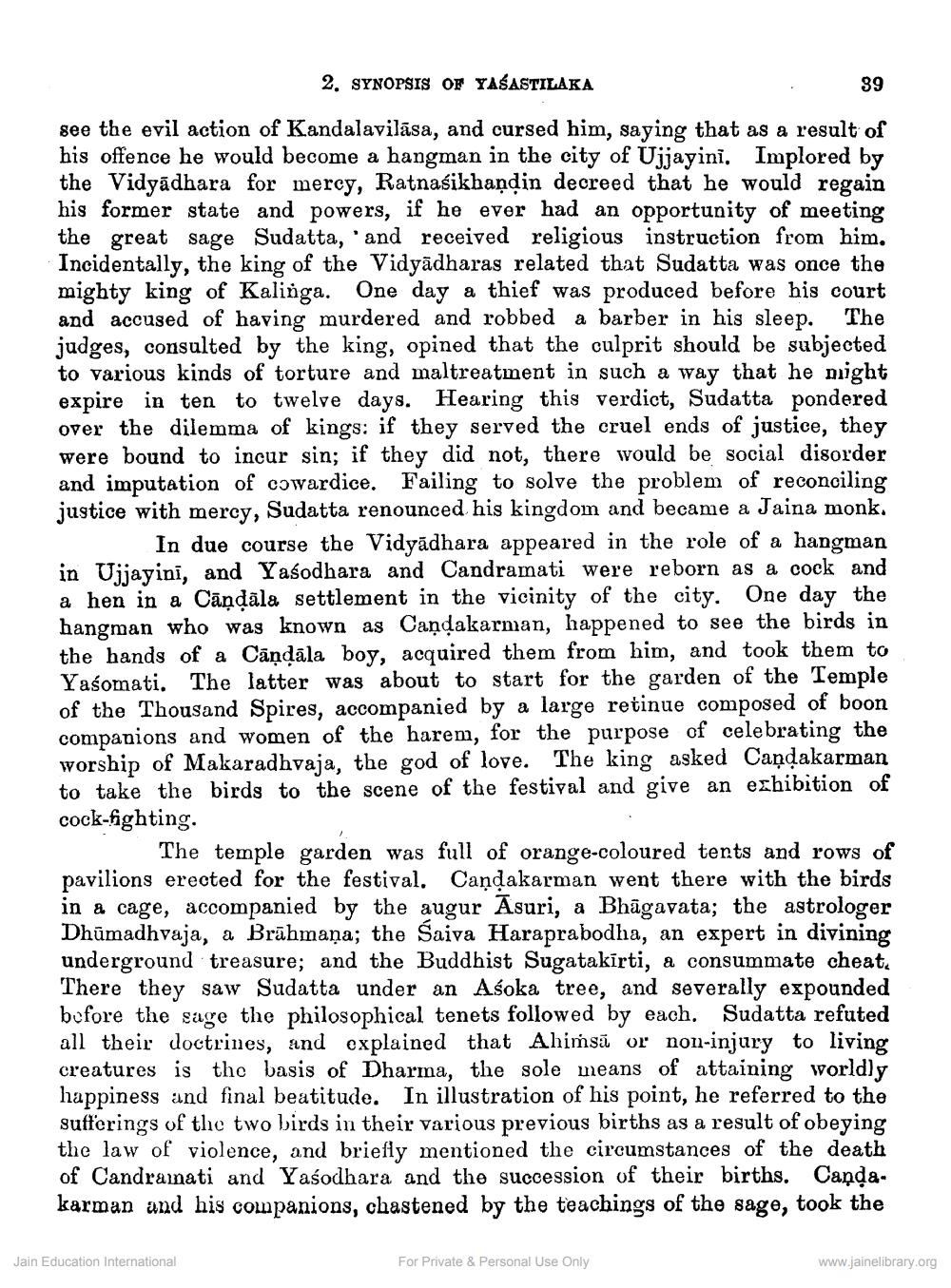________________
2. SYNOPSIS OF YASASTILAKA
39
see the evil action of Kandalavilāsa, and cursed him, saying that as a result of his offence he would become a hangman in the city of Ujjayini. Implored by the Vidyadhara for mercy, Ratnaśikhaņdin decreed that he would regain his former state and powers, if he ever had an opportunity of meeting the great sage Sudatta, and received religious instruction from him. Incidentally, the king of the Vidyādharas related that Sudatta was once the mighty king of Kalinga. One day a thief was produced before his court and accused of having murdered and robbed a barber in his sleep. The judges, consulted by the king, opined that the culprit should be subjected to various kinds of torture and maltreatment in such a way that he night expire in ten to twelve days. Hearing this verdict, Sudatta pondered over the dilemma of kings: if they served the cruel ends of justice, they were bound to incur sin; if they did not, there would be social disorder and imputation of cowardice. Failing to solve the problem of reconciling justice with mercy, Sudatta renounced his kingdom and became a Jaina monk.
In due course the Vidyadhara appeared in the role of a hangman in Ujjayini, and Yaśodhara and Candramati were reborn as a cock and a hen in a Cāņdāla settlement in the vicinity of the city. One day the hangman who was known as Caņďakarman, happened to see the birds in the hands of a Cāņdāla boy, acquired them from him, and took them to Yasomati. The latter was about to start for the garden of the Temple of the Thousand Spires, accompanied by a large retinue composed of boon companions and women of the harem, for the purpose of celebrating the worship of Makaradhvaja, the god of love. The king asked Caņdakarman to take the birds to the scene of the festival and give an exhibition of cock-fighting
The temple garden was full of orange-coloured tents and rows of pavilions erected for the festival. Caņdakarman went there with the birds in a cage, accompanied by the augur Āsuri, a Bhāgavata; the astrologer Dhūmadhvaja, a Brāhmaṇa; the Saiva Haraprabodha, an expert in divining underground treasure; and the Buddhist Sugatakīrti, a consummate cheat There they saw Sudatta under an Asoka tree, and severally expounded before the gave the philosophical tenets followed by each. Sudatta refuted all their doctrines, and explained that Ahimsā or non-injury to living creatures is the basis of Dharma, the sole means of attaining worldly happiness and final beatitude. In illustration of his point, he referred to the sufferings of the two birds in their various previous births as a result of obeying the law of violence, and briefly mentioned the circumstances of the death of Candrannati and Yasodhara and the succession of their karman and his companions, chastened by the teachings of the sage, took the
Jain Education International
For Private & Personal Use Only
www.jainelibrary.org




